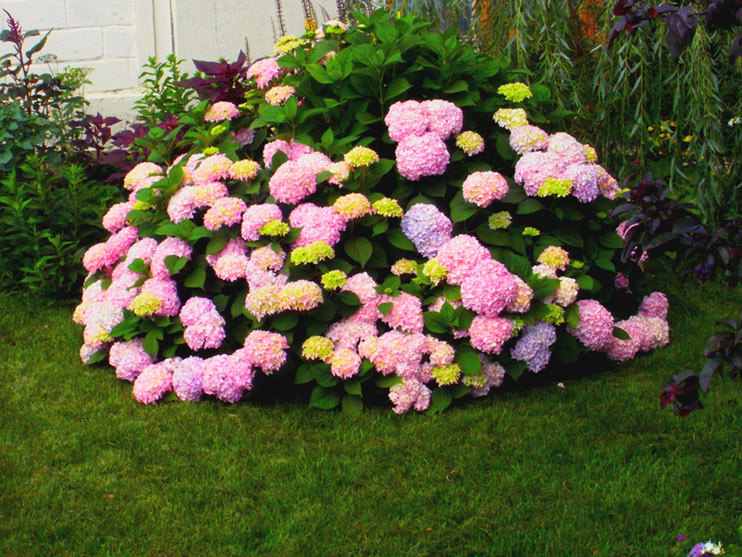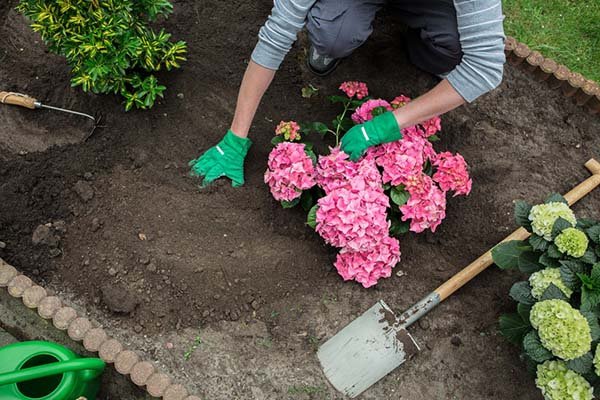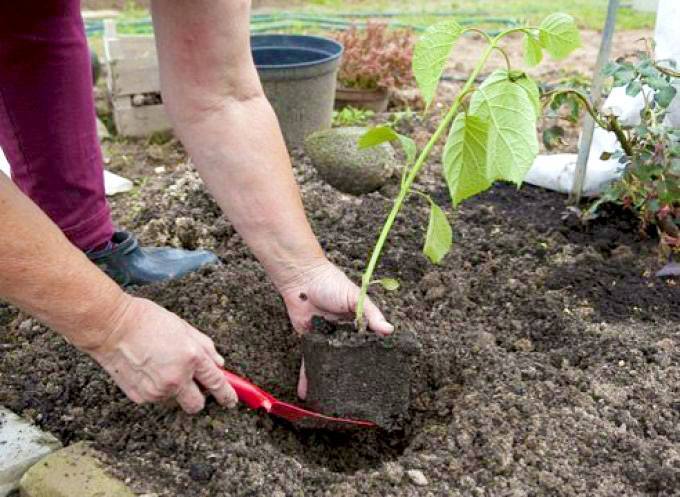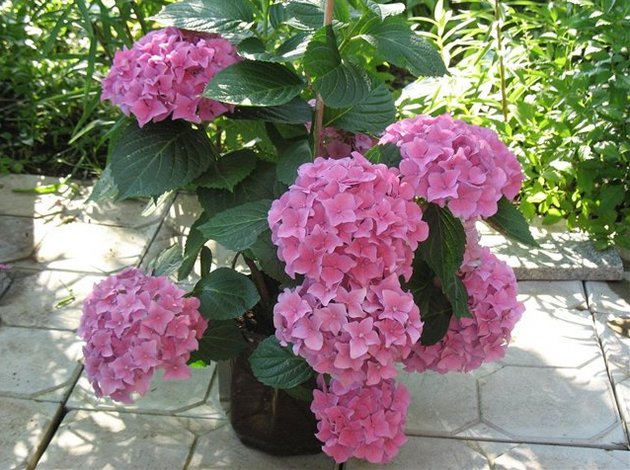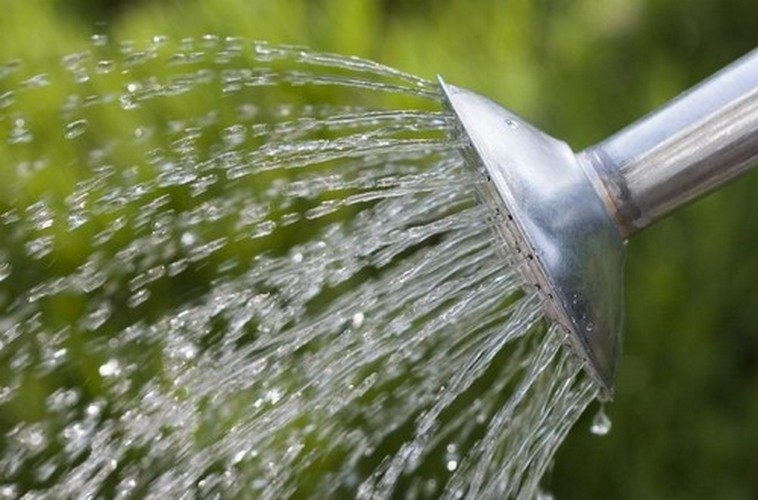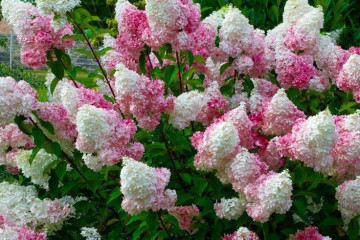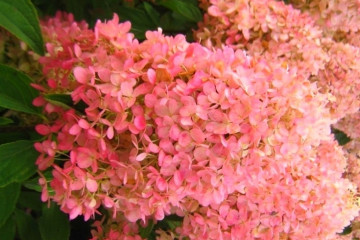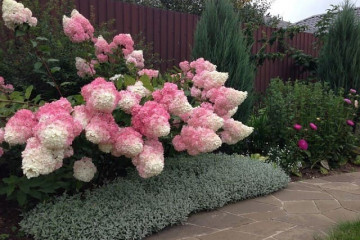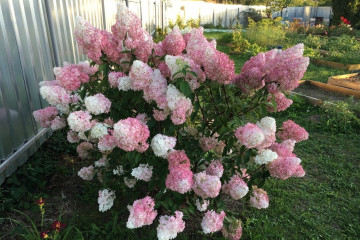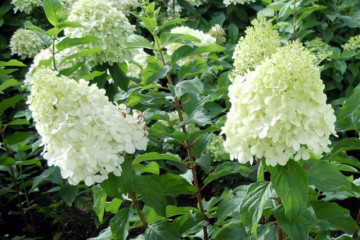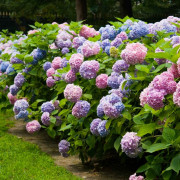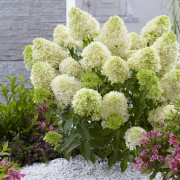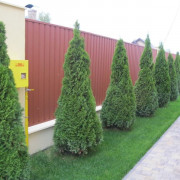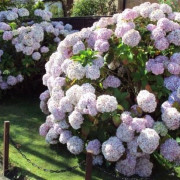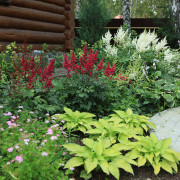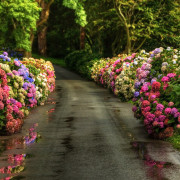Hydrangea Macrophylla (Hydrangea Macrophylla) - description
Content:
Hydrangea macrophile (large-leaved) is considered one of the most beautiful garden plants. This magnificent flowering shrub is immensely popular with gardeners around the world.
The origin and characteristics of the Macrophila hydrangea
The macrophylla hydrangea was brought to Europe from China at the beginning of the nineteenth century. Thanks to the painstaking work of many breeders in the twentieth century, more than 120 hybrids of this plant were obtained.
This is a special type of shrub that can be grown both in the garden and at home.
Hydrangea large-leaved macrophile - description of the bush
- The height of an adult shrub is about 1.5 m, width is 1-1.5 m;
- The leaves are large, dark green in color with jagged edges;
- Spherical inflorescences are formed on the tops of wide-spreading stems;
- The inflorescence ball reaches 18-20 centimeters in diameter;
- Flower heads are of two types: fertile, which are located in the center, and large, sterile, which are located at the edges.
At the beginning of flowering, all inflorescences are white, with a barely noticeable light green tint. Over time, they acquire different colors: blue, pink, lilac, purple or snow-white.
The acidity of the soil has a significant effect on the shade of flowers:
- at a neutral acidity level, the bloom will be white or cream;
- if the soil is more alkaline, the flowers will be lilac or pink;
- on acidic soil, hydrangea will bloom blue or purple.
Hydrangea rough macrophylla - planting and care in open ground
To successfully grow a large-leaved macrophile hydrangea, you need to choose the right place for planting and adhere to all the rules of agricultural technology.
Site selection and land preparation
Large-leaved plant is very fond of the sun, but can grow in slightly shaded places. The more light falls on the plant, the more magnificent and beautiful it will bloom. It is very important not to plant the bush next to large trees, buildings or high fences.
A month before planting macrophiles in open ground, it is necessary to prepare a planting hole measuring 70-80 cm in diameter and 60 cm in depth. It is necessary to add a nutritious soil mixture to it, consisting of rotted peat, river sand, garden soil and rotten pine needles.
Landing
When planting a flower in open ground, you must follow the sequence of actions:
- A day before planting the plant, pour 1.5-2 buckets of water into the hole so that it wet the soil well.
- Fill the hole a third with humus, garden soil and surface peat. All components must be taken in equal proportions.
- Place the bush in the hole and spread the roots well.
- Cover the hole with earth, without deepening the root collar of the plant, and tamp the soil around the trunk, but you do not need to nail down the earth too much, otherwise you can damage the roots.
- Water the planting abundantly - a bucket of water for one bush is enough.
- To preserve moisture and reduce weed growth, cover the trunk circle with straw, hay or dry peat.
How to properly transplant a purchased hydrangea
If a rough macrophylla hydrangea is bought in a store or nursery, planting and caring for the acquired young plant is as follows:
- The acquired hydrangea is removed from the pot and placed in a bucket of water for 2-3 hours.
- The accreted roots are slightly separated and incisions are made at an angle in several places.
- The earth is not crushed from the roots, it is very important to place the flower in the hole along with the soil from the pot, so it adapts faster.
- A little potassium-phosphorus fertilizer is added to the hole.
Reproduction of hydrangea Macrophila
Hydrangea macrophile can be propagated by cuttings, layering and dividing the bush.
Cuttings
Cuttings can be cut from an adult bush in early spring. Hydrangea cuttings process:
- Stems with one internode are picked up.
- The upper part is cut straight, and the lower one at an angle so that the cut is prickly.
- On each sheet, cut off 1/2 part.
- All blanks are placed in wet sand or clay, deepening to half;
- The plantings are covered with foil.
- When the cuttings take root, the film is removed.
Growing from cuttings
At the beginning of spring, young annual shoots are bent to the ground and well dripped, leaving the top of at least twenty centimeters on the surface. Water the layers every three days. When they take root, they are separated from the mother bush and transplanted to another location.
Dividing the bush
The dug bush is freed from the ground, all old and weak stems are removed. The bush is divided into two or three parts, the roots are cut off and the cuttings are immediately planted in pots. The plantings are covered with earth and watered well.
Hydrangea large-leaved (macrophile) care
In order for the macrophile hydrangea to develop well and not lose its beauty, it must be provided with timely care.
Watering
Macrophile hydrangea, like any species of this shrub, loves moist soil very much. It must be watered every 2-3 days, 1-2 buckets under each bush. For watering, it is better to take settled and purified water. During a period of intense heat, the plant is watered every other day, 10 liters under one bush. Hydrangea macrophylla - home care:
- watering the bushes every two days;
- fertilizing every 14 days;
- transplanting into a new pot - once a year.
Top dressing
Like any hydrangea, Macrophila needs intensive feeding. Organic matter (liquid manure and chicken droppings) and mineral complexes are used as fertilizers. A very good result is obtained by the introduction of special fertilizers for hydrangeas. Top dressing is carried out at intervals of two times a month.
With fertilizers, you can easily change the color of your hydrangea. When aluminum and sulfur sulfate is added to the soil, pink and blue flowers will bloom on the bushes at the same time. If aluminum or iron alum is added to the soil, the pink flowers will turn blue. You can turn blue inflorescences into pink ones by adding a little alkali to the soil.
Shrub care during the flowering period
When caring for a hydrangea during flowering, it is important to consider the type of fertilizer and what color of the plant they are intended for. In order to maintain the blue color of the flowers, once a week the shrub is watered with aluminum alum (a tablespoon per 10 liters of water) or special dressings for blue hydrangeas.
It is also important to remove root growth and young side shoots, leaving the strongest stems for future flowering. Miss hydrangea macrophylla flower - home care during flowering includes:
- removal of all inflorescences that have faded;
- timely application of top dressing and good watering;
- placing a pot with a flower in a well-lit area of the apartment.
Features of care during the rest period
After the hydrangea has faded, it is necessary to cut off all dry and broken stems, thin out the center of the bush. It is very important not to prune healthy shoots as the flower buds will be removed during pruning. Hydrangea Macrophila blooms on last year's woody stems, so it is important not to prune them.
Preparing for winter
Hydrangea Macrophila has an average winter hardiness. In order for the bush to winter well, it must be protected from the cold, for this:
- With the arrival of cold weather, the bush must be freed from all the leaves.
- Form bundles from the branches and carefully tie them.
- Tilt the beams and pin them to the ground.
- Wrap inclined and pinned stems with non-woven fabric.
- Cover the bushes with dry foliage.
